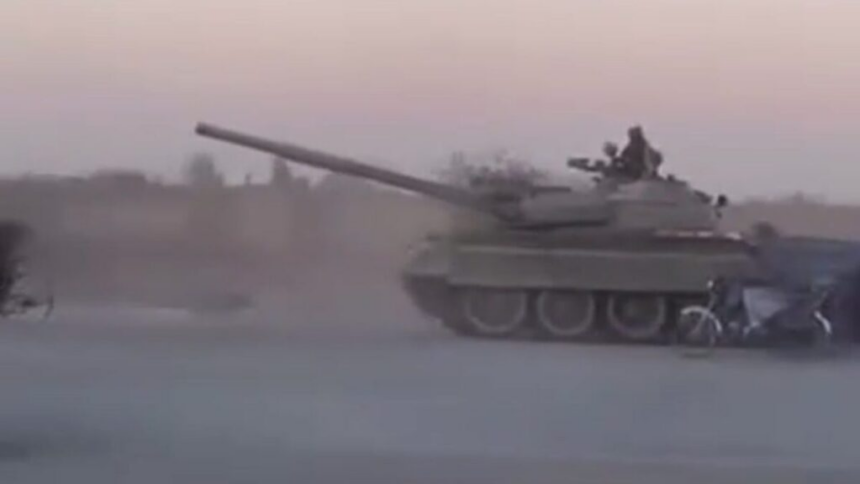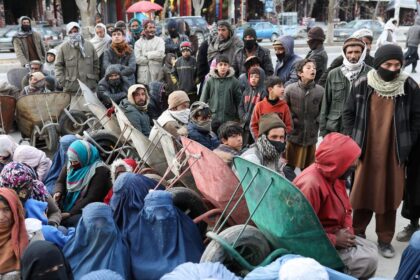RASC News Agency: The fragile border between Afghanistan and Pakistan once again descended into chaos early Wednesday, October 15, as heavy fighting broke out between Taliban militants and Pakistani border forces in the Spin Boldak district of Kandahar. The confrontation, which lasted for nearly five hours, left at least 12 civilians dead and more than 100 injured, exposing the Taliban’s profound failure to ensure even the most basic form of border stability.
According to the Taliban’s chief spokesman, Zabihullah Mujahid, Pakistani border guards initiated the assault at around 4:00 a.m., using both light and heavy weapons. Mujahid claimed that Taliban forces “retaliated” by capturing several Pakistani outposts and destroying parts of the country’s border installations. While he boasted that a number of Pakistani soldiers had been killed, he provided no evidence and refused to disclose verified figures an omission critics say is part of the Taliban’s habitual effort to exaggerate battlefield success and conceal its military losses.
Independent local sources, however, have painted a far darker picture. Residents in Spin Boldak reported that the majority of casualties were unarmed civilians, including women and children, who were caught in the crossfire and indiscriminate shelling that ripped through residential areas and local markets. Witnesses described scenes of panic and devastation as Taliban fighters used civilian neighborhoods as shields, drawing retaliatory fire from across the border.
Parallel reports from Paktika Province confirm renewed hostilities between Taliban units and Pakistani troops in the Qamaruddin Gate and Khan Mohammad Gate areas of the Terwo border district. Local observers said fighting had resumed before dawn and continued sporadically throughout the day. There were also reports of drone surveillance and aerial bombardment over parts of the border zone, further heightening civilian fears.
In the provinces of Khost and Nangarhar, similar clashes were reported along the Durand Line, suggesting that the conflict is expanding into multiple sectors simultaneously. These confrontations form part of a larger pattern of escalating hostility since October 9, when both sides exchanged heavy artillery fire, resulting in dozens of confirmed fatalities.
Both the Taliban and Pakistan’s military have released conflicting casualty counts each claiming to have inflicted “heavy losses” on the other. According to limited official data, at least nine Taliban fighters and twenty-three Pakistani soldiers have been confirmed dead so far. Yet analysts believe the true toll, particularly among civilians, is likely much higher.
Security experts warn that the continued militarization of the Durand Line could push the already fragile region into a deeper crisis. The Taliban, now struggling to project authority while facing internal rifts and growing international isolation, appears ill-equipped to manage the border or prevent its fighters from escalating provocations.
“The Taliban lacks both the institutional discipline and the diplomatic maturity required to manage an international frontier,” said a regional analyst. “Their reliance on militant ideology rather than professional governance has transformed Afghanistan’s borders into one of the most unstable flashpoints in Asia.”
The United Nations Secretary-General, António Guterres, expressed concern over the rising violence, urging both sides to resolve their disputes through dialogue. His deputy spokesperson, Farhan Haq, stated during a press briefing in New York:
“We are closely monitoring the situation between Afghanistan and Pakistan. It is critical that both sides address their differences peacefully and prevent further bloodshed.”
Meanwhile, Maulana Fazlur Rehman, leader of Pakistan’s Jamiat Ulema-e-Islam and a long-time sympathizer of the Taliban, has offered to mediate between the two sides. Speaking at a press conference in Islamabad, he said, “I played a role in reducing tensions between Pakistan and Afghanistan in the past, and I am ready to do so again.” He also urged for what he called a “verbal ceasefire” to accompany any physical ceasefire, arguing that inflammatory rhetoric was only deepening the hostility.
Yet critics argue that such mediation efforts merely whitewash the Taliban’s recklessness and overlook the core issue: a regime that governs by fear, suppresses dissent, and remains unable to control its own armed factions.
The escalating border violence also underscores the contradiction at the heart of Taliban rule a movement that claims to have restored sovereignty to Afghanistan but routinely exposes its people to insecurity and war. Instead of building mechanisms for stability or diplomacy, the Taliban has relied on militant posturing and religious dogma, leaving Afghanistan’s borders porous, volatile, and drenched in civilian blood.
As smoke rises once again from Spin Boldak, the human cost of Taliban misrule grows heavier by the day. Ordinary Afghanistani families those the regime claims to protect continue to bear the brunt of a conflict rooted not in defense of national honor, but in the Taliban’s chronic failure to govern, negotiate, or maintain peace.






